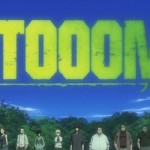The Reasons Why An Anime Series Can’t Be As Popular As The Game Of Thrones

A few days ago while writing the Twelve Kingdoms Blu-ray review I was again troubled by one of the hardest questions anime fans and anime production companies all face. That question being: how come modern anime series never become big hits in the West? The Twelve Kingdoms, for example, is remarkably similar to the Games of Thrones TV series. So how come one slipped completely under the mainstream radar while the other took mainstream viewers by storm?
Let’s use these two series as representatives of their respective mediums and inspect what holds back anime from becoming a consistent blockbuster on American soil.
The initial barriers
Before we even begin to compare the Twelve Kingdoms and the Game of Thrones based on content we must first face off against the initial barriers that stand in the way of every anime, not matter how accomplished it is. It’s easy to pinpoint the initial barriers that prevent a hefty number of people from ever watching anime. The first barrier is the language barrier. Most Americans are simply too lazy to watch anything that’s not in English. And why should they? Everything else on TV is in good ol’ English right? To make things worse most English dubs are not up to par with American acting, so watching dubbed anime is a compromise for most. There’s also the cartoons barrier. I know, I know, everyone watch South Park and Family guy right? Well, yeah. That’s part of the problem. South Park and Family Guy are satire shows – they sustain the common belief that animation isn’t to be taken seriously. How do you expect people to look at anime as a valid intellectual and emotional medium when they have all but grown accustomed to dumbed down comedy shows?
Cultural familiarity
In terms of plot the Twelve Kingdoms and Game of Thrones are pretty similar. Moreover both require the viewer to learn specific terminology in order to understand what is taking place. You have to learn the names of a slew of people, to be able to distinguish between towns and factions and to know a little bit about the political and economical systems that govern that respective world. I’ve watched the TK in its entirety and the first two seasons of GoT, and based on my views I’d argue that in terms of overall plot TK is more elaborate and intelligent than GoT. However, the cultural weight the terminology in TK carry will turn off a lot of Western viewers. Memorizing and understanding the political power struggles in GoT is hard as it is, and that show is in English and uses English terms. So when an equally complex show with pseudo-Chinese terms like TK comes around it’s no surprise people are reluctant to dedicate the time needed to understanding it. And this issue isn’t unique to the Twelve Kingdoms either. You can find cultural references in every anime to a degree – from name honorifics, special Japanese events, Japanese cuisine and even self-referenced jokes about the nature of anime itself. Most of the time, even if it is taken for granted by the veteran anime fan, cultural familiarity plays a big part in anime. It’s ironic that the same cultural references that make us love anime so much are at the same time detrimental to the success of anime in the West.
Not bloody enough
There’s no subtle way to say this so I’ll be direct on this point. The Western audience has grown to associate violence with blood and a medium like anime that uses subtle gestures or dramatic stances to show death isn’t bloody enough for it. Both Twelve Kingdoms and Game of Thrones show armies clashing and slaughtering each other, and yet the Twelve Kingdoms shy away from showing a real massacre while in the Game of Thrones the massacre is at time the heart of the episode. This would be a good time to point out that mature anime that did considerably good in the U.S. usually had blood and gore going for them. Ninja Scroll, Akira, Ghost in the Shell, Dragon Ball Z. These are all series that were bloody enough to suit the Western violence standard. Ever wondered why the risky 90s anime were more popular in the West in comparison to contemporary anime show? Well here’s your answer – gore and bloodlust talk.
Some might point out to the budget constraints that hunted the Twelve Kingdoms while Game of Thrones burned tens of millions of dollars, but this argument is an eternal one – hardly any anime ever gets the same budget an American movie (or HBO TV show) does. Furthermore, I strongly believe the limited animation in anime is one of its merits and not the other way around. It adds charm and sophistication to the medium, just like the cultural references I mentioned above.
Publicity and awareness
You know the third season of Game of Thrones is coming. You know about it because we are being bombarded with commercials of the damn (good) thing 24/7 on TV, in the papers and on social networks. Publicity is the number one seller for television content, and it makes all the difference in the world. If the viewers are aware of your upcoming product the chances it will be consumed is naturally much higher. Guess how much publicity the Twelve Kingdoms Blu-ray got prior and following their launch? If you guessed zilch then you are correct. Without publicity the public remains unaware to the nature of the product, and in terms of anime that means the product will only be consumed by the niche that is the anime fandom. Millions are spent every year on anime advertisement in Japan. But Japan is a huge market for anime where people pay prime prices to own or watch their shows. The Western market is small and relatively not profitable for the big anime studios so they would never advertise anime over here. Of course U.S. anime distribution companies (Media Blasters in the case of TK) won’t advertise here either since they don’t have the budget for such adventurous endeavors. The result? Everybody knows about GoT, but only you know what the heck is TK. Regardless of how amazing the anime you are currently watching is, word of mouth can only go so far.















